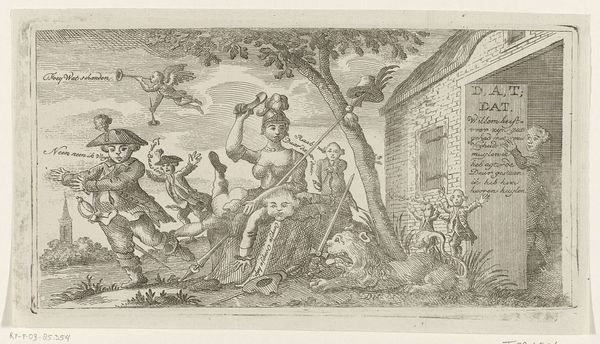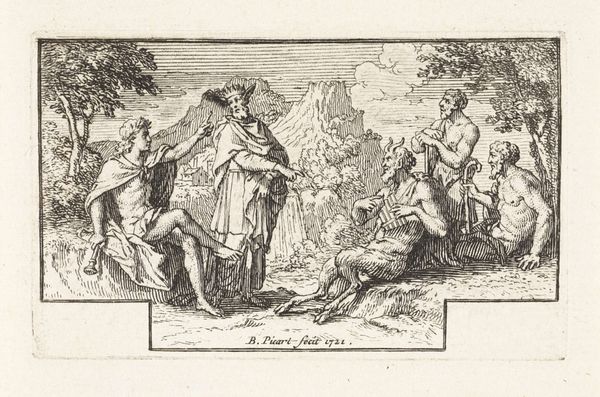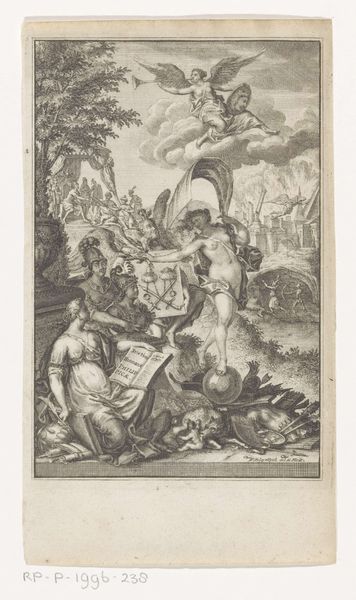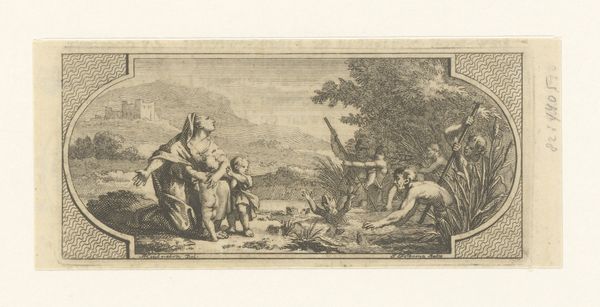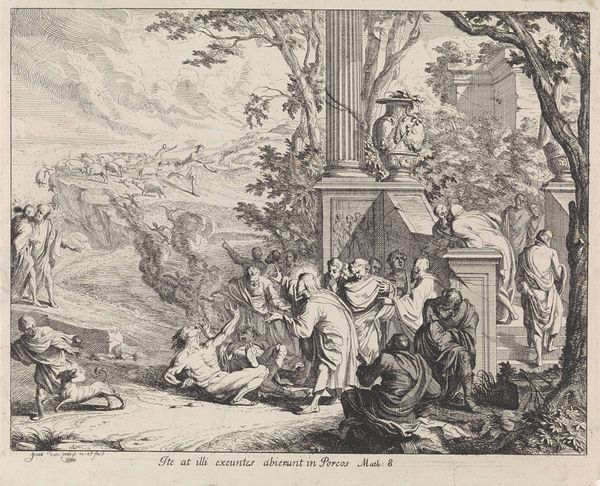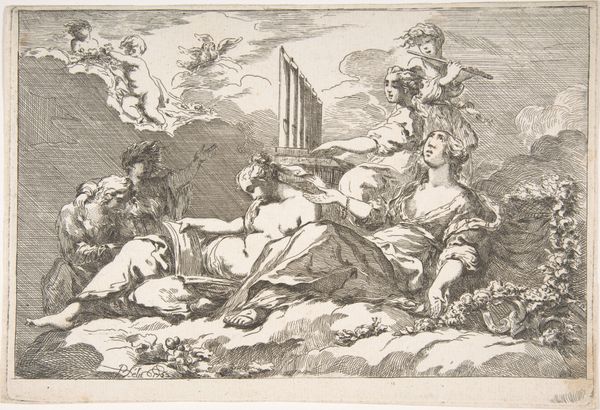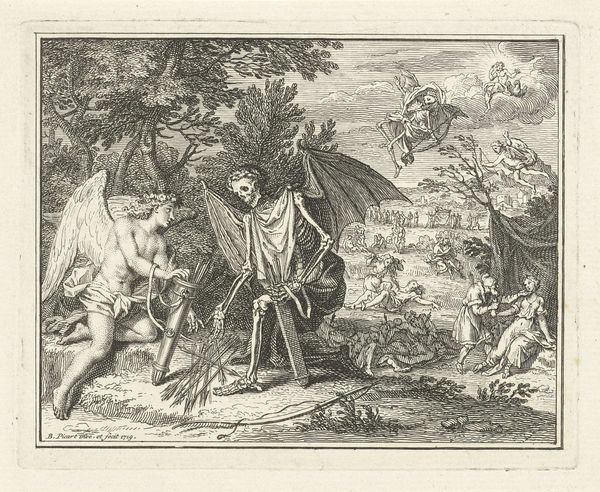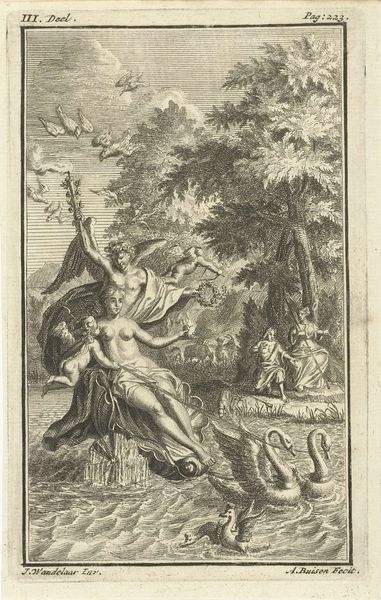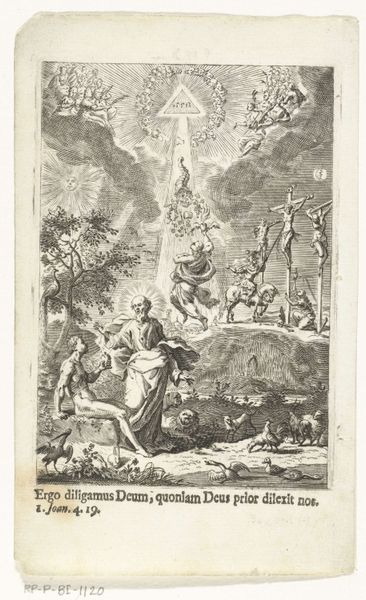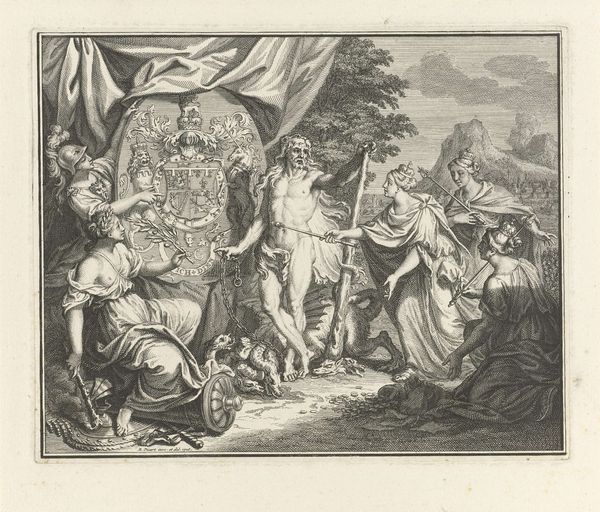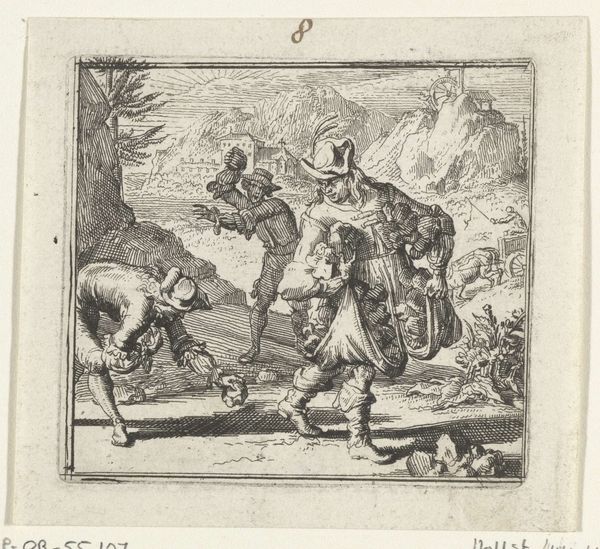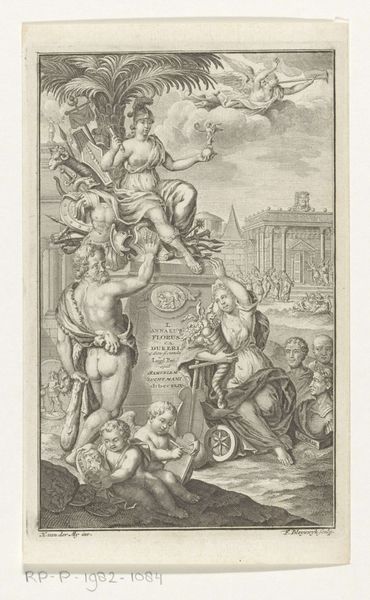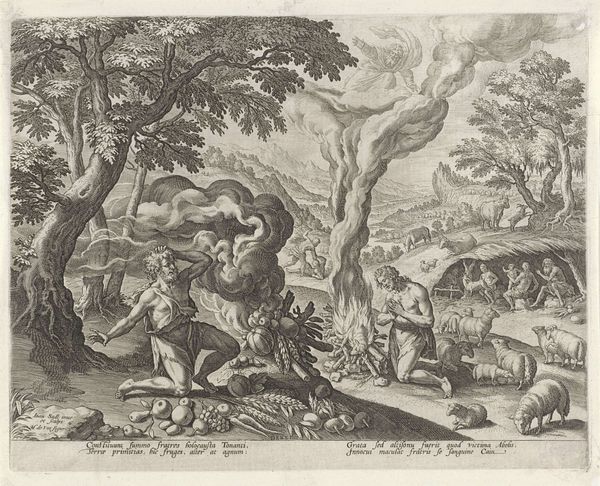
Allegorie op het ochtendgloren met personificatie van Aurora 1741 - 1820
0:00
0:00
abrahamdelfos
Rijksmuseum
Dimensions: height 72 mm, width 98 mm
Copyright: Rijks Museum: Open Domain
Editor: This is an engraving by Abraham Delfos called *Allegorie op het ochtendgloren met personificatie van Aurora*, made sometime between 1741 and 1820. The sheer number of details is amazing, especially considering the limitations of the engraving medium. I’m struck by the use of light and shadow to create depth. How do you interpret this work through a formalist lens? Curator: The formal elements are indeed paramount. Note how the composition is structured: a distinct foreground, middle ground, and background create spatial recession. The allegorical figure of Aurora dominates the central space. She’s balanced by the architectural structure and clock on the right and bathed in a stark raking light. Editor: The light almost emanates from the architecture itself. I also see the distinct tonal gradations used to render volume and texture. How does that linearity affect the viewer's understanding? Curator: Observe the cross-hatching technique employed to generate shading. It not only defines form but also dictates the textural quality. The very linearity inherent in the engraving process gives a crisp precision, even to the more ethereal elements. Notice the rays of light emanating from the sun. Are they contained? Editor: No, the rays of light lead my eyes across the entire engraving, tying all the figures and the setting together. Even the textures created by the engraving—smooth skin versus rough stone—guide my understanding of the narrative. Curator: Precisely. It's through these formal devices that we can begin to decipher the allegory without relying on contextual interpretation. The artist invites the viewer to contemplate balance and transition in this print by way of the arrangement of elements. Editor: Seeing the image as a collection of lines, shapes, light, and shadow reveals a structured design. It’s a language of forms that shapes our perception. Thank you for offering that alternative point of view. Curator: Indeed, the work itself tells a story about seeing.
Comments
No comments
Be the first to comment and join the conversation on the ultimate creative platform.
